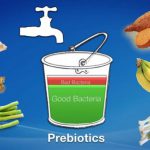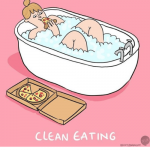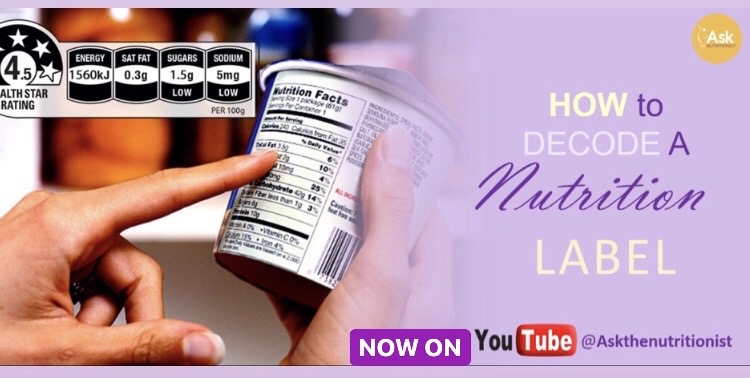Nutrition labels can be tricky to understand. While natural food items do not necessarily require labeling, processed food items always have to be labeled! It is, therefore, crucial for you to know and understand what these labels mean.
https://www.youtube.com/watch?v=Mm6yANAIB70&t=152s
First of all, you need to always need to think of your body as an engine that requires fuel in the form of energy that you can get from Carbohydrates, proteins, and fats. While Carbohydrates and proteins provide 4 calories per gram, fat provides 9 calories per gram. Understanding your food labels ensures that you make an informed choice of the food you choose for your energy needs!
Depending on the packaging of the food you buy, Nutrition labels can generally be divided into serving size, calories section that shows the amount of macro and micronutrients, and the footnote that includes the ingredients used to make the particular food.
On the serving size section, some food labels will tell you the size of one serving and also how many servings the whole package has, while others may leave that information out so be on the lookout. Manufacturers also put out the labels with the notion that the end consumer is an ideal moderately active person who is on a 2000 calorie per day diet which is obviously not the case for all consumers!
So if a label states that one serving size is 27g and the whole packet has 10 servings, if you happen to consume the whole packet in one sitting then it means that you will have to multiply the calories enlisted by 10! In some countries like the US snacks or other food items that can be consumed in one sitting are now being labeled in a way to show the number of calories you consume say in a whole muffin or half of a muffin.
The next part is usually the calorie section that shows the macronutrients which include Fats, Carbohydrates and Proteins. Nowadays most labels will enlist the calorie sizes per 100grams. This means that if you went and bought your favorite 400grams bread and consumed all of it then you need to multiply the number of macronutrients enlisted on the label by 4! An example taken from a typical 400grams bread shows that for every 100grams of the bread you consume, you will get 9.9% of protein, 55.97% of carbohydrates of which sugars will be 8.41%, and 5.22% of fat.
Should you happen to consume the whole block of bread in a day or in one seating alone, then you need to multiply all these values by 4! So if you need to only consume 2000 calories per day, you might end up having no calorie deficit which is the difference between the calories you consume and the calories you use in a day for you to achieve or maintain your weight! In this section you can also see the amount of sugar added on the Carbohydrate section of the food group as well as whether the fat contained in the food item is saturated, unsaturated, or a trans fat. Avoid buying food with a high amount of saturated and trans fats as well as a high amount of added sugar.
The next section shows the micro nutrients which are usually under consumed which mostly includes the amount of sodium/salt, cholesterol, fiber and other vitamins and minerals. Manufacturers are required to always declare the amount of sodium and cholesterol because most people over consume them while fiber and other vitamins and minerals are under consumed. Again most packages have the values of these per 100 grams as well as the required daily values. Remember these values are for a person consuming 2000 calories and are not standard for say an expecting or lactating mother who requires 2500 calories or an athlete who may only need at least 1800 calories depending on their level of activity
The last section is about the ingredients list of the food and this should always be the section you begin reading. The first ingredient is always what the manufacturer has used prominently to produce the food item. If you keep reading the ingredients section and you notice that you cannot pronounce or cannot identify any of the artificial items, then its time to choose a different manufacturer or different source of the food you are interested in. From this section, you can also identify any items that you may be allergic to and also any added preservatives that could be cancer culprits. Avoid such sweeteners such as sorbitol, maltitol, mannitol, saccharin, dextrose, molasses, maltodextrin, syrup, nectar, juice concentrate, and anything else that is not natural. You would rather eat the natural form of that food.
I hope that you will decide to choose better next time you go shopping! You are what you eat, so don’t be fast and cheap, do it right!









